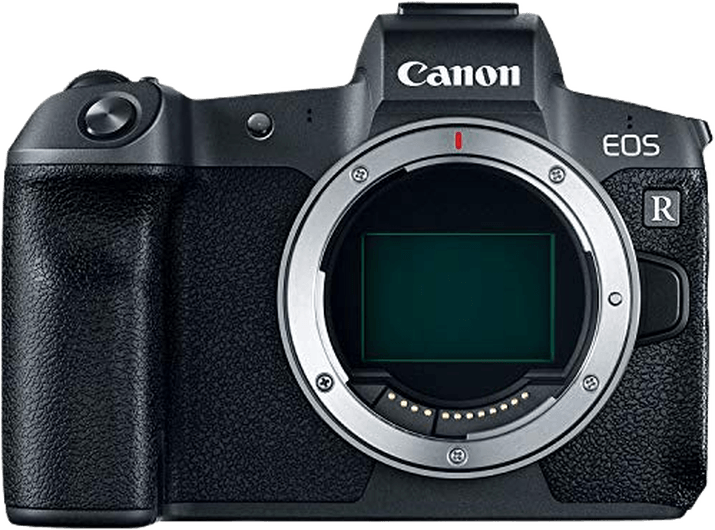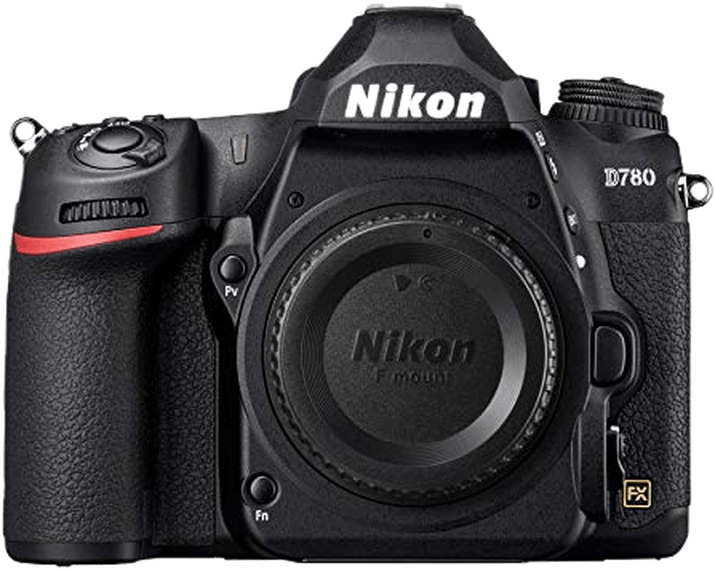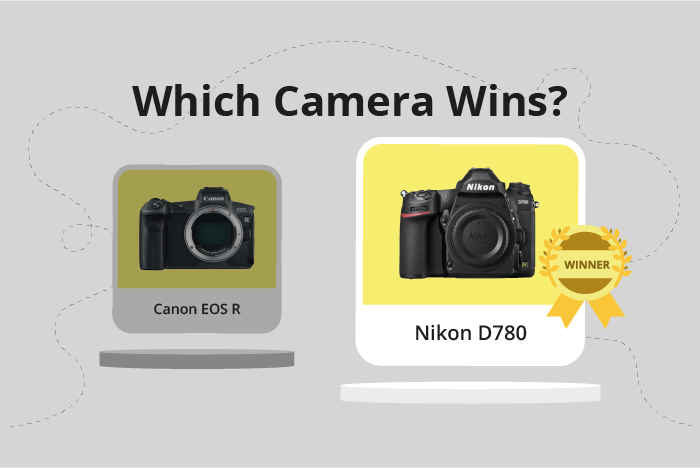Canon EOS R vs Nikon D780 Comparison
Canon EOS R

Nikon D780

The Nikon D780 takes the lead with a score of 81/100, while the Canon EOS R trails behind with a score of 74/100. Both cameras were released within two years of each other and have similar launch prices, with the D780 at $2299 and the EOS R at $2300.
In terms of common specs, both cameras are full-frame, with the Canon EOS R being a mirrorless camera and the Nikon D780 a DSLR. Their sizes are comparable, with the EOS R measuring 136 x 98 x 84mm and the D780 at 144 x 116 x 76mm. However, the EOS R is significantly lighter, weighing only 485g, compared to the D780’s 850g.
The Nikon D780’s higher score indicates its overall better performance and features. On the other hand, the Canon EOS R’s advantage lies in its lighter weight, making it more portable and easier to handle. Weighing the pros and cons of each camera, it ultimately depends on the user’s preference and needs when choosing between the two.
Canon EOS R vs Nikon D780 Overview and Optics
The Nikon D780 triumphs over the Canon EOS R in optics, scoring 77/100 compared to the Canon’s 73/100. Both cameras share several specifications, including a CMOS sensor, full frame sensor size, and the absence of image stabilization. They also have their respective lens mounts: the Canon RF for the EOS R and the Nikon F for the D780.
The Nikon D780 outperforms the Canon EOS R in several aspects. With a shooting speed of 12 frames per second, the D780 is faster than the EOS R, which has a shooting speed of 8 frames per second. This higher speed allows for better performance in capturing fast-moving subjects. Furthermore, the D780’s Expeed 6 processor contributes to its superior image quality, as evidenced by its DXOMARK sensor score of 97, compared to the EOS R’s Digic 8 processor and a DXOMARK score of 89.
On the other hand, the Canon EOS R boasts a higher megapixel count of 30.3, as opposed to the Nikon D780’s 25 megapixels. This difference in megapixels allows the EOS R to capture more detail in images, potentially making it more suitable for large prints or cropping.
When considering the optics of these two cameras, the Nikon D780 emerges as the stronger contender due to its faster shooting speed, superior processor, and higher DXOMARK sensor score. However, the Canon EOS R still holds an advantage in terms of higher megapixel count. Ultimately, the choice between these cameras depends on the specific needs and preferences of the photographer, with the Nikon D780 being better suited for action and sports photography, while the Canon EOS R may be more appropriate for those prioritizing image detail.
Canon EOS R vs Nikon D780 Video Performance
The Nikon D780 is the superior camera for video capabilities, scoring 91 out of 100, while the Canon EOS R scores 70. Both cameras share some common specifications, such as 4K max video resolution and 3840 x 2160 max video dimensions. Additionally, both cameras have built-in time-lapse functionality.
The Nikon D780 outperforms the Canon EOS R in terms of max video frame rate, offering 120fps compared to the EOS R’s 30fps. This higher frame rate allows the D780 to capture smoother and more detailed slow-motion footage, making it a better choice for videographers who require this feature.
Although the Canon EOS R has a lower video score, it still provides quality video capabilities with its 4K resolution and 30fps frame rate. This makes it suitable for general video use and could be a sufficient option for those who do not require high frame rate slow-motion capture. However, its lower score and frame rate make it less versatile than the Nikon D780 for video purposes.
Considering these factors, the Nikon D780 is the clear winner in terms of video capabilities due to its higher score, 120fps frame rate, and overall versatility. The Canon EOS R, while still offering decent video quality, lacks the advanced slow-motion capabilities that the D780 provides. Therefore, videographers looking for the best video performance should opt for the Nikon D780, while those with less demanding video requirements may find the Canon EOS R to be a satisfactory choice.
Canon EOS R vs Nikon D780 Features and Benefits
The Canon EOS R and Nikon D780 both receive a feature score of 87 out of 100, resulting in a tie. They share several common features, such as a 3.2-inch screen, touchscreen capability, flip screen, GPS, WIFI, and Bluetooth.
The Canon EOS R excels with a screen resolution of 2,100,000 dots, providing a clearer and more detailed display for better image review and menu navigation. This advantage allows users to easily and accurately check their images for proper focus and exposure.
On the other hand, the Nikon D780 has a slightly higher screen resolution of 2,359,000 dots. This difference, though minimal, offers a marginally better display quality. The D780’s advantage lies in its potential for improved image quality and performance, thanks to its higher pixel count.
However, both cameras have their strengths and weaknesses. The Canon EOS R’s higher screen resolution may be more appealing to some users, while others may prioritize the Nikon D780’s marginally better display quality and potential for improved image performance.
Ultimately, the choice between these two cameras depends on the specific needs and preferences of the user. Both cameras offer excellent features, and their identical feature scores of 87/100 reflect their overall quality and capabilities. Comparing the differences in screen resolution and other specifications can help users make an informed decision when choosing between the Canon EOS R and the Nikon D780.
Canon EOS R vs Nikon D780 Storage and Battery
The Nikon D780 triumphs over the Canon EOS R in the storage and battery department with a score of 97/100, compared to the Canon’s 35/100. Both cameras accept SD, SDHC, and SDXC memory cards, and are UHS-II compatible. Additionally, both cameras offer USB charging capabilities.
The Nikon D780 outperforms the Canon EOS R with its two memory card slots, while the Canon EOS R only has one. Furthermore, the Nikon D780 provides a significantly longer battery life of 2260 shots, compared to the Canon EOS R’s 370 shots. The Nikon’s battery type is EN-EL15b, while the Canon uses LP-E6N.
The Canon EOS R doesn’t have any advantages in storage and battery over the Nikon D780. The Nikon D780’s dual memory card slots and extended battery life make it a superior choice for photographers who require more storage and longer shooting sessions.
Canon EOS R vs Nikon D780 – Our Verdict
Are you still undecided about which camera is right for you? Have a look at these popular comparisons that feature the Canon EOS R or the Nikon D780:

